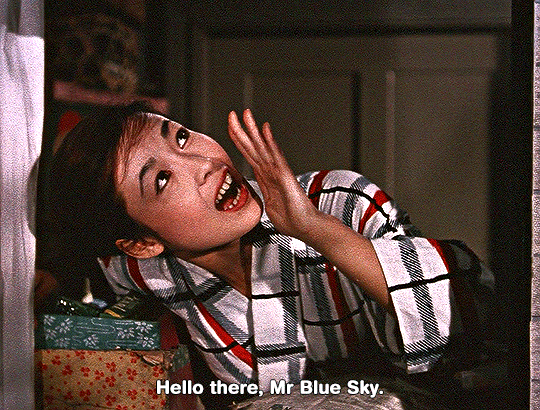
‘Yasuzo Masumura was born 24 August 1924 in Kofu on the island of Honshu and started going to movies at a very early age, having become friends in kindergarten with the son of a movie theater owner; in high school he discovered Jean Renoir. After a brief military stint at the tail end of World War II, he entered the University of Tokyo as a law student who also studied literature -– befriending Yukio Mishima, one of his classmates, who would later star in his feature Afraid to Die (Karakkaze yaro, 1960). After two years he dropped out and found a job working as assistant director at Tokyo’s Daiei studio, where he earned enough to return to college as a philosophy major, graduating in 1949 with a thesis on Kierkegaard. The next year he won a scholarship at the Centro Spirimentale Cinematografico in Rome, where Michelangelo Antonioni, Federico Fellini and Luchino Visconti were said to have been among his teachers. (The first of these –- and the only one still alive –- still remembers him, having recently turned up at a Masumura retrospective in Rome.)
‘After graduating, Masumura assisted on an Italian-Japanese production of Madame Butterfly (1954), then returned to Japan in 1954, where he worked as assistant to Mizoguchi on Princess Yang Kwei Fei (1955) and Street of Shame (1956) at Kyoto’s Daiei studio. After Mizoguchi died, he became an assistant to Kon Ichikawa on three more films before shooting his own first feature: Punishment Room (Shokei no heya, 1956), Nihonbashi (1956), and A Full-Up Train (Man’in densha, 1957). Until Daiei went bankrupt in 1971, he remained there, often making three or four features a year, most often accepting assignments and then sometimes shaping them into his own distinctive forms of rebellion; afterwards, for the remaining eleven years of his directorial career, he averaged about one film a year -– an uneven output that included many of his worst films, but at least two creditable achievements: Lullaby of the Earth (Daichi no komoriuta, 1976), perhaps his most significant independent production, and Double Suicide in Sonezaki (Sonezaki shinju, 1978), an adaptation of a Bunraku play. (By contrast, his last two films, which I’ve seen only without translation, seem to have few defenders: Eden no sono [The Garden of Eden, 1980] –- his only overseas film, an Italian spinoff of The Blue Lagoon –- and In Celebration of This Child aka My Daughter’s 7th Birthday [Konoko no nanatsu no oiwaini, 1982], a detective thriller.) He also wrote extensively for Japanese television -– mostly, it appears, after he left Daiei -– but my knowledge of this work is minimal. And all I know about his personal life is that he married a hairdresser and had no children.
‘A precursor of the so-called Japanese New Wave that took root in the early ‘60s, around the same time as the French Nouvelle Vague, Masumura was initially regarded as a major guru by Nagisa Oshima in 1958 before embarking on his own features. Indeed, Masumura, director Ko Nakahita and screenwriter Yoshio Shirasaka –- who scripted at least ten of Masumura’s features, including Giants and Toys (Kyojin to gangu, 1958) and A False Student -– were all heralded by Oshima in a 1958 essay called, “Is It a Breakthrough? The Modernists of Japanese Film”), and Masumura was labelled the “possessor of the sharpest sociological perceptions of the three.”
‘At this point, the release of Oshima’s own first film was still about a year away and what he was celebrating in this trio was a taste for youthful irreverence, a conscious methodology and a call for freedom and innovation. In the case of Masumura, part of what this challenge entailed was not an application of the principles of Italian neo-realism -– which is what one might have expected from his formal training –- but, as I will shortly discuss, something closer to the reverse.
‘Oshima turned on his role model only two years later, objecting in particular to Afraid to Die (not one of Masumura’s best films, in my opinion). Essentially he was denouncing Masumura as a modernist -– which in Japanese terms meant catering to Western tastes -– and he never recanted. Perhaps such a falling out was inevitable given Masumura’s own profile as a Western-influenced studio director, though it hardly begins to account for how transgressive much of Masumura’s work looks today, especially from an American perspective.
‘A film critic whose collected articles –- published in 1999 in the aforementioned Japanese collection devoted to his work -– are almost as extensive as Jean-Luc Godard’s, Masumura wrote a major position paper published in Eiga hyoron (March 1958) replying to his critics who accused him of making bleak and tasteless films that lacked sentiment and featured comically exaggerated and unbelievable characters without any depiction of environment or atmosphere. Essentially boasting that he was guilty as charged on all counts, Masumura offered a few counterblasts:
a. “Sentiment in Japanese films means restraint, harmony, resignation, sorrow, defeat, and escape, not dynamic vitality, conflicts, struggle, pleasure, victory, and pursuit … I buy the straightforward and crude expression, for I believe the Japanese restrain our desire so much that we tend to lose sight of our true mind.”
b. “There is no such a thing as non-restricted desire. A person who thoroughly discloses his or her desire can only be considered mad … [And] what I would like to create is not a stable person who cleverly calculates reality, and safely expresses his or her desire within the calculation. I do not want to create a humane human being. I want to create a mad person who expresses his or her desire without shame, regardless of what people think.”
c. “What interests me is a conflict between expressions of naked desires which cannot be mitigated by the environment.”
‘In Masumura’s films, this madness can veer all the way from the hysterical promotional campaigns of three competing candy companies in the Tashlinesque Giants and Toys to an army nurse during the Sino-Japanese war in the somewhat hysterical and Fulleresque Red Angel (Akai tenshi, 1966), dispensing sexual favors to an amputee and a drug-addicted doctor. It’s the madness of war itself in Yakuza Soldier aka Hoodlum Soldier (Heitai yakuza, 1965), where the only violence seen in this depiction of World War II is between Japanese soldiers, and desertion is viewed as evidence of sanity and health -– or in Nakano Spy School (Rikugun nakano gakko, 1966), where the personal and sexual betrayals of espionage ultimately rule out even patriotic alibis. One finds this madness in the slow-witted young man (in A False Student) who poses as a college student, joins a radical study group, and literally goes nuts after being mistaken for a police informer; and in the tea master who methodically sets about sleeping with his late father’s girlfriends (in the relatively lackluster Thousand Cranes [Senbazuru, 1969], adapted from Yasumari Kawabata’s famous novel). It’s very much in the kidnapped model who willingly submits for ‘artistic’ reasons to getting carved up by a blind sculptor in a warehouse in Blind Beast (Moju, 1969). (This isn’t the only instance of essentialism found in Masumura’s eccentric depictions of sexuality -– a trait that either compromises his ambivalent feminism or else contradicts it entirely, as in the dreadful The Tortures of Hell aka The Snare aka Kung-fu Harikari [Goyokiba-kamisori hanzo jigokuzeme, 1973], which features a police detective who uses his iron-hard penis, hammered into shape by an anvil, as an instrument to torture women suspects.)
‘Masumura argued that typical social problem films, including those of Italian neo-realism, foster resignation by giving environment a deterministic force. At the same time, while insisting that he doesn’t regard European society as superior to Japanese society, he maintains that “you can actually experience ‘beautiful and powerful man”’ once you step inside Europe: “Their museums are filled with paintings and sculptures embodying the human beauty and power which the Europeans have spent two thousand years discovering and creating; their streets are crowded with people whose daring looks, confident steps and lively demeanors convey their pride and confidence as Man. In Europe, ‘man’ is real.”
‘Critic Tadao Sato, who commissioned this 1958 article -– and who takes credit for having discovered Masumura as a director -– told me that Masumura was the first member of his generation to view such masters as Mizoguchi, Ozu and Akira Kurosawa with a certain amount of irreverence. A radical whose strategy was strictly to bore from within, working with whatever came to hand (including existing genres as well as scripts and actors), he can’t generally be identified with a specific visual style; reportedly he even disliked the striking style that cinematographer Kazuo Miyagawa brought to Tattoo, with its beautiful diptych compositions. “Some believe more in the image, others believe in the story,” he avowed in one interview. “Personally I believe in the story. Because images aren’t absolute, one can’t express everything with them.” He also maintained:
I never use close-ups. I detest them. Why do a close-up of an actor or actress’ face? I’ll agree to do a close-up if it’s the real face of a peasant, for example … [but] the performance of actors has no interest because it’s finally a lie and doesn’t wind up with anything beyond a certain ‘resemblance’.
Lest this sound like an overall denigration of actors, Masumura should also be credited with developing the performances of Ayako Wakao, one of the greatest and most sensual of all Japanese film actresses -– whom Mizoguchi featured in Gion Festival Music (Gion bayashi, 1953) and Street of Shame and who appeared in at least twenty of Masumura’s films (and most of his masterpieces) –- and with fostering a kind of feminism relating to the self-determination of his women characters, many of them played by her.
‘What is persistent in Masumura’s work, sometimes accompanying his fruitful collaborations with Wakao and other actors, is a certain ethical engagement with the world –- and a set of strategies for pursuing and sustaining that engagement, such as the privileging and exaggeration of obsessive forms of behaviour. Partly for this reason, many of his films are deeply erotic on some level. Because sexuality for women has often served as coin of the realm in Japanese society, the way that these women’s ‘fortunes’ get saved, spent or squandered within that economy remains a profound ethical issue, and I can think of few directors apart from Masumura, his partial mentor Mizoguchi and his partial disciple Oshima who have made as many erotic films in tandem with the frankness of their political concerns. In the US, eroticism tends to be associated more with the right end of the political spectrum than with the left: such figures as Ayn Rand, Josef von Sternberg, Leni Riefenstahl and King Vidor, for instance. But if one wants to understand why Oshima’s In the Realm of the Senses (1976) is a profoundly leftist (and anti-war) film, Masumura’s oeuvre and all it implies points one in the proper direction.’ — Jonathan Rosenbaum
____
Stills
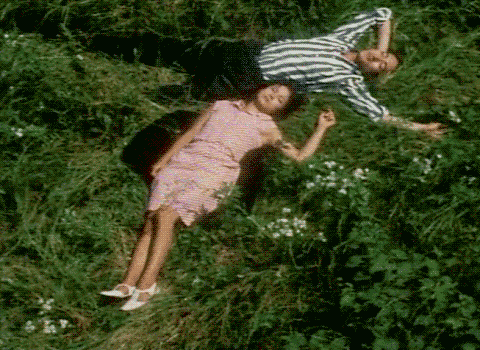

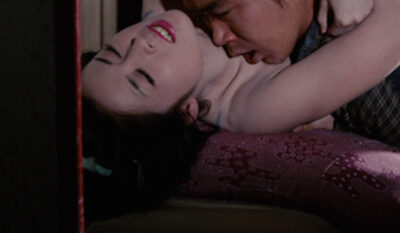

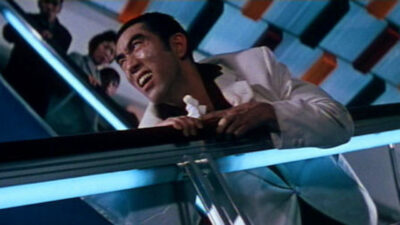

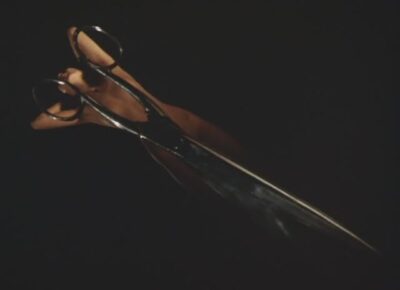
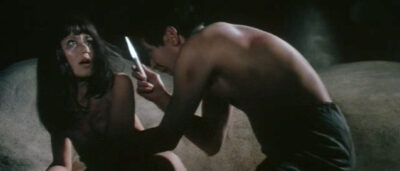
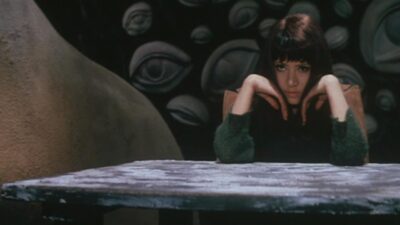


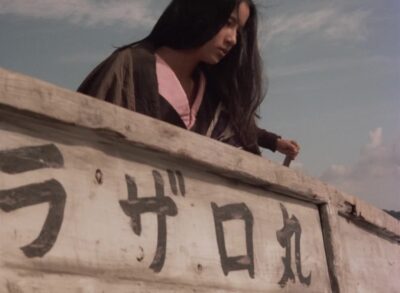
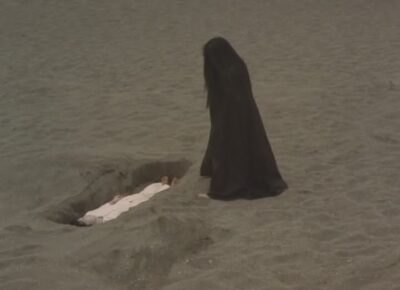
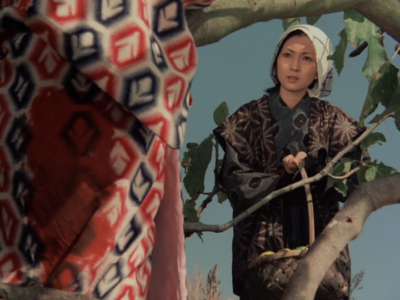
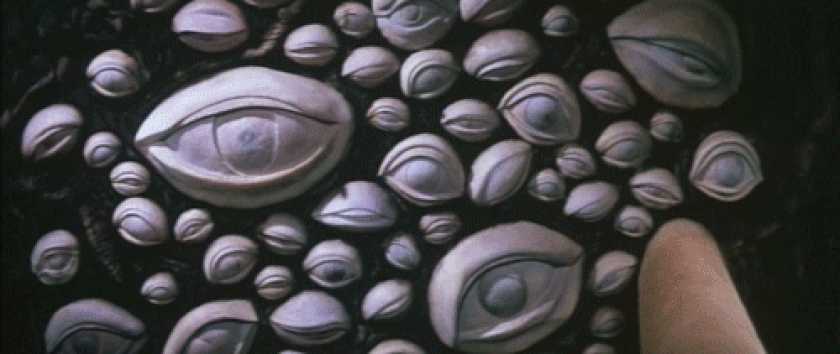
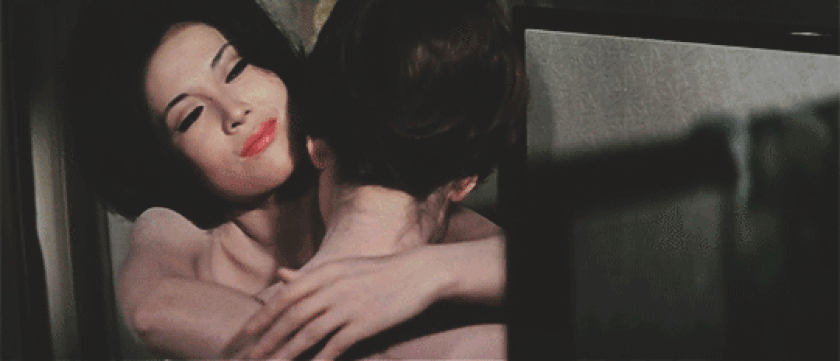
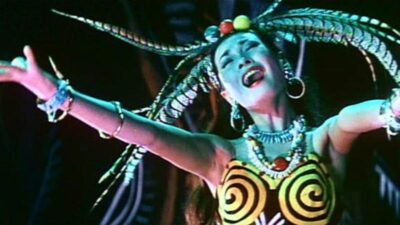
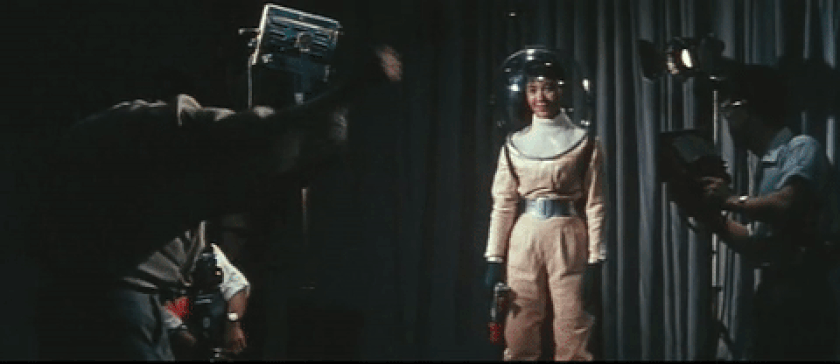


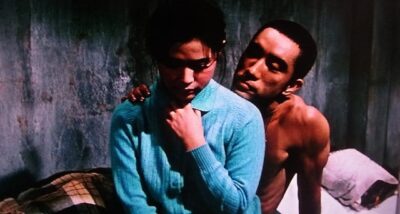
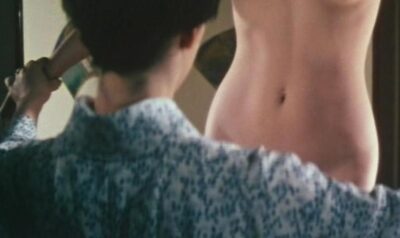


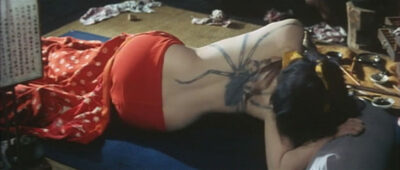
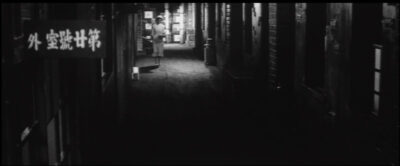
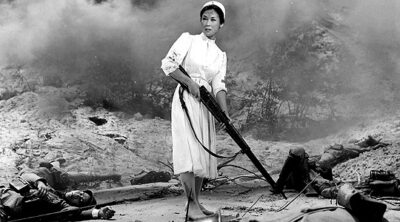
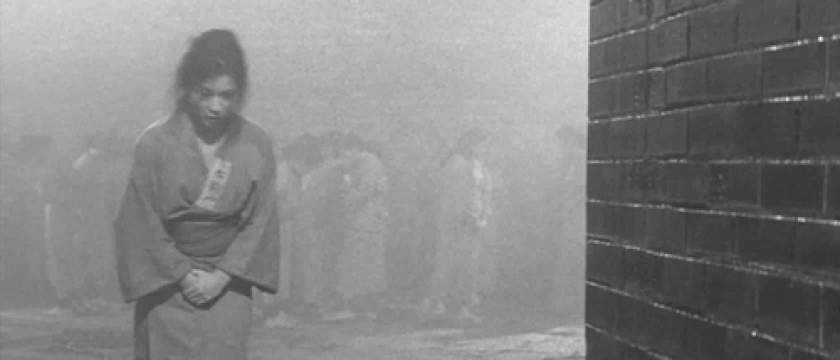

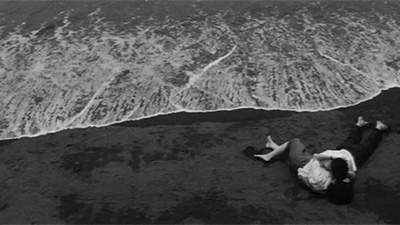
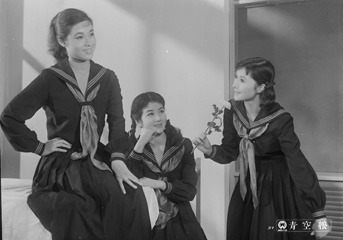
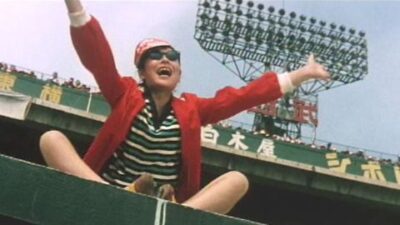
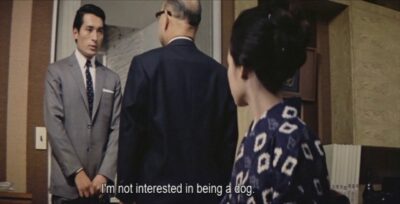

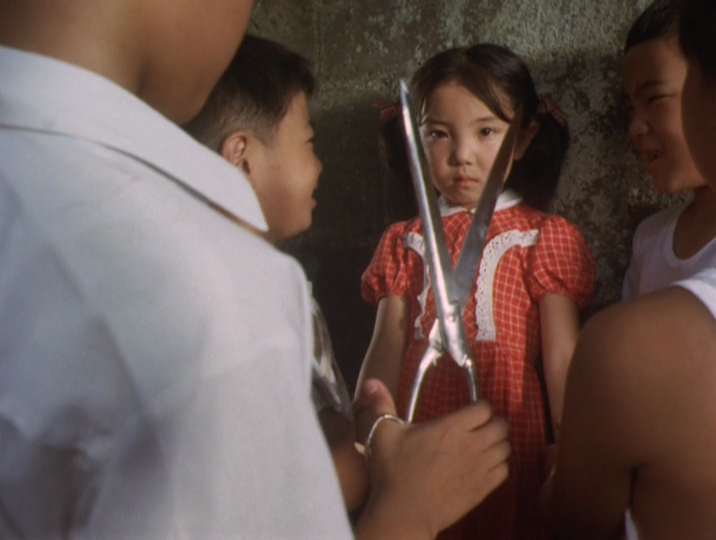
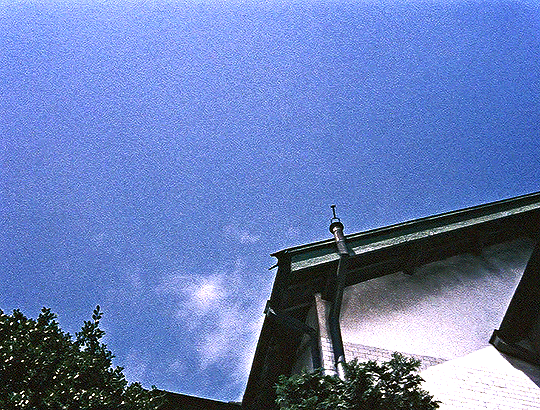
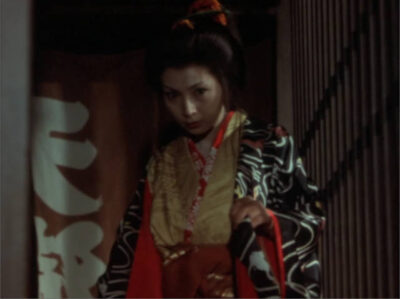
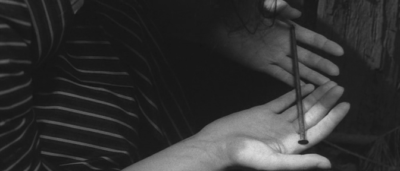
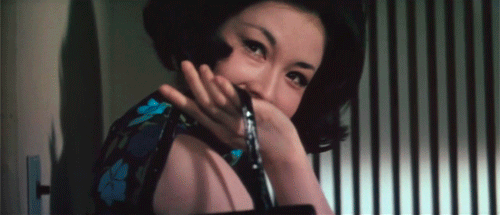





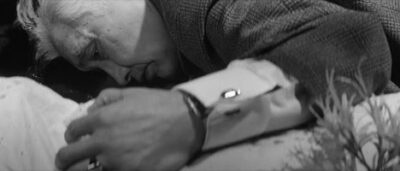


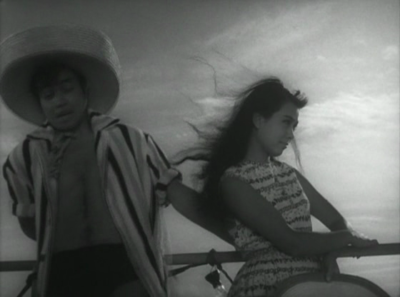


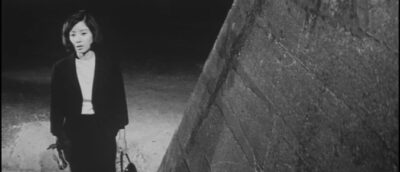
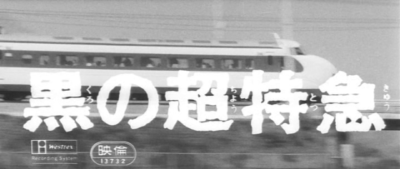
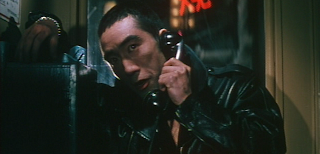
____
Further
Discovering Yasuzo Masumura: Reflections on Work in Progress
Celebrating the lunatic films of Yasuzo Masumura
Countercurrents: The Films of Yasuzo Masumura
Yasuzo Masumura, provocateur en quête d’absolu
Yasuzo Masumura: Passion and Excess
YASUZO MASUMURA ; LE PRÉCURSEUR DE LA NOUVELLE VAGUE AU JAPON
Yasuzô Masumura @ Senscritique
Lost Sounds and Soundtracks: Yasuzo Masumura’s “Irezumi”
Yasuzo Masumura @ Windows on Worlds
Rare Sighting: Yasuzo Masumura
Masumura Yasuzō: Facing the Crisis
‘Give me passion and ideas’
Space In-Between: Masumura Yasuzo, Japanese New Wave, and Mass Culture Cinema
Yasuzo Masumura – The Films in My Life (On Criterion)
A lunatic cry: ideas and passions of Yasuzo Masumura
An interview with Yasuzo Masumura (1970)
Yasuzō Masumura @ Letterboxd
____
Extras
Trailer: Retrospectiva Yasuzo Masumura
YASUZO MASUMURA – BREAKING THE 180 DEGREE RULE
Yasuzo Masumura – extrait podcast excerpts
____
Interview
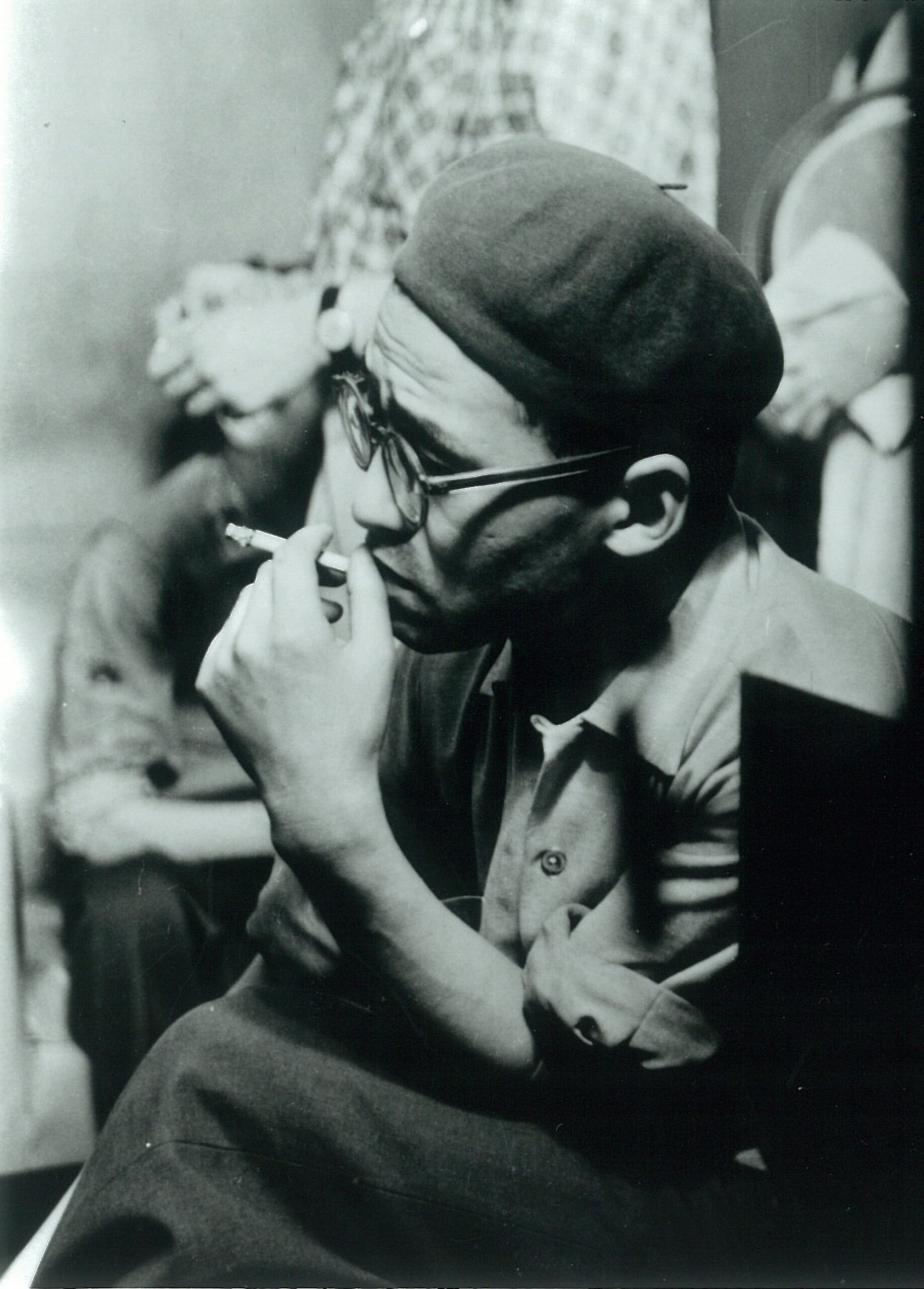
QUESTION: What generation do you think you belong to?
MASUMURA: I believe I belong the generation of the “end of the war “, because I was mobilized for only the last three or four months of the war.
QUESTION: Do you know other artists of your generation?
MASUMURA: The writer Endo Shusaku, for example. Mishima Yukio is the same as age as me, we were in the same faculty at the University of Tokyo. But I don’t feel like I belong to the same generation as him. I understand very well why he was trying to defend the Emperor or the right… but still, I mean we had nothing in common at the start. We found each other suddenly in the middle of the war. This violence, this incredible pressure looked to us like human nature. And we really didn’t know how to do it, how to save humanity… we couldn’t start from democracy, nor from communism or imperialism. We really had nothing to start with. So I had no confidence in my country, I could only believe in myself, and still I was skeptical, imprecise…
QUESTION: Is there a conflict in between your nationality and the European civilization that you have known during your studies in Italy?
MASUMURA: Want it or not, Europe is there. The problem is to decide if we adhere to it or if we resist it… from the point of view of the history of human evolution, is it better to go through the “European state” or not? Me, I think we have to take this path at all costs, but perhaps most Japanese believe that it’s not worth it, because the Japanese temperament doesn’t accept the rational. I believe in the rational, in a complex level, but they don’t agree with me. There is a group of people, like Imamura, who find in the irrational the strength and a way of living; and there is another group of people like Oshima, who want to believe in a violently progressive rationality. I do not believe in either.
So I come back to this spirit of the “end of the war” generation: who can understand? Even my colleagues don’t understand me. But, after all, I end up thinking that I don’t care. Therefore, why am I expressing myself? This is a question that bothers me. If somewhere, somebody understood a little what I want to show, after all, that would be enough for me… I may be a little twisted…
In European thought, there is, I believe, two things: rationalism and individualism. Neither suit the Japanese temperament. The Japanese are perhaps more fanciful, they really laugh at the idea of “individual” or “reason”. They believe that this cannot give rise to drama or aesthetic emotion. Personally, I am convinced that it is absolutely essential to go beyond this aspect of European thought, even if we fail later. Either way, Japanese people essentially do not believe in the individual. When a Japanese person portrays a Japanese, he generally believes that it is by painting him a Japanese devoid of individuality that it will be the most accurate. It’s perhaps the fairest or at least the easiest. But there are people, like me, who think differently. Mizoguchi did not believe in individualism at all among the Japanese, and stood outside the notion of rationality. Even Ichikawa Kon, who apparently does intellectual films that appeal to reason, is, in reality, neither intellectual nor rational. His work is only supported by a certain aesthetic sensation. And can we be satisfied with that?
QUESTION: But couldn’t we also say of your heroines that they are constantly trying to overcome their essentially Japanese weakness, as they try to assert themselves?
MASUMURA: We often talk about the assertion of the self in the woman. That’s very beautiful, but in my opinion, in the whole world, there are no more cheeky women that the Japanese. There is no country in which women are capable of being as presumptuous and without complexes.
The self of the Japanese woman has been affirmed for a long time. It is not a modern problem. The problem is to know how to express this, to know if we should express ourselves in a rather Asian way, or on the contrary, on a radical way, bypassing the stage of “European” modernism. Imamura is looking for purely Japanese spiritual and physical roots, like the etnographer Yanagida Kunio. As for Oshima, he seems to have skipped this “Japanese” stage to try a radical logic and go beyond the problem of individualism or rationalism. I can’t, like Imamura, to go back; or, like Oshima, to deny the current stage. This is a turning point that everyone avoids, but me, I want to try to take it…
For example, living in the middle of Tokyo, I will never believe that we can find a certain harmony in our society. No. There is no harmony, nor familiar morality. That only existed at the end of the Edo era, in a perfectly codified petit-bourgoise society. In Japan nowadays, this harmony and rhythm or life don’t exist anymore. I can’t understand the work of Ozu as it is based on the minds and feelings of the people of the late Edo era and the Meiji era. Likewise, Mizoguchi’s films are portraits of Japanese women of the same era.
QUESTION: In that case, what Japanese woman are you portraying, in your films?
MASUMURA: I am not portraying women specifically. But ultimately, it is the woman who is the most human, right? Men only live for women, dragging their burden like a horse drags his cart, all for eventually dying of a heart attack. Men are anti-human, while women act arbitrarily everywhere, say anything, and therefore are extremely human. That means that taking women as objects we can most easily express humanity. Men are beings completely deprived from freedom. It’s probably because they don’t give birth. Men have to think of Honor, of Truth. But ultimately, men are animals that only lives for women. This is why it is extremely uninteresting to paint the portrait of men. He becomes a “hero” if he is not a failure. The most virile men are not interesting. You only need to read Tanizaki: all his heroes are weak, cowardly, ugly… A great virile man is not human, and that’s because he lives for others, for society. Men are so chained by the rules of society that one cannot express the human through them. Therefore, to express the human, there is only the woman. It is not to express the woman that I choose the woman… I am not a specialist in women like Mizoguchi.
QUESTION: What is eroticism for you?
MASUMURA: It is the most human. When a human undresses “in a human way”, it becomes inevitably erotic. This eroticism can refer either to Freud, or to Yanagi, or be more complex. But in my opinion, the erotic is first of all very human, because the man is partly an animal. So for me, eroticism, even if it is very “daring”, is part of a healthy spirit. The eroticism I imagine is the inherent quality of the female creature. Unlike the man, who is only a shadow, the woman is a being that really exists, an extremely free being – that’s eroticism as I see it.
QUESTION: Can cinema be an effective mean for expressing eroticism?
MASUMURA: I don’t think so. I think cinema is only secondary as an artistic medium. But I hope that cinema offers other possibilities. This is why I still keep making movies. But anyway, from a purely artistic point of view, cinema is not perfect. Cinema will never reach the artistic purity that others arts have; arts like painting, sculpture or music.
QUESTION: Your films are becoming more and more “aesthetic”, excessive, grotesque up to a certain point…
MASUMURA: Yes, that’s because you can’t trust the image. It is often said that a film like Red Angel is full of grotesque images, but I never search for the grotesque. However, I try to play as little as possible with the technique, which undoubtedly ends up giving an impression of “aesthetic-grotesque”. I don’t follow the cult of the image. I think that a film must have a construction, a frame, an evolution; in short, its own structure. I don’t care about beauty, aesthetics… I will never understand that.
QUESTION: The amount of blood in your films increases more and more…
MASUMURA: It’s because blood has a very intimate connection with sex. I believe there is a mystical connection between blood and the female sex. Of course, blood when dealing with the female sex is a very dangerous trap: one would get lost in a bizarre universe, in a domain where it’s forbidden to think. I think you should never refrain from thinking… aestheticism is almost the forbidding of thought… Therefore I had a lot of trouble shooting Swastika, from Tanizaki; while in Love for an Idiot (based on Naomi by Tanizaki), there is a certain opposition between “Japanese” and “European” (and, surprisingly, in Tanizaki who is European is the woman: the man represents something very Japanese that succumbs to the woman), in Manji, this schema collapsed, one enters a more Asian climate. This is where the blood flows magically.
QUESTION: What do you think of Wakao Ayako, who is the protagonist of most of your films?
MASUMURA: She is a very selfish and calculating woman. At one point, she was full of vitality; I believe I knew how to use her selfishness and her vitality. She is not a pure woman, and she knows it. This vile side of women, she knew how to exploit it in a positive way, but not anymore. It’s probably because she started to put on airs of a “star”, and I am sad that she has rejected her true nature. Another thing: thirty is the critical age for a Japanese woman. Wakao Ayako, she has also lost her vitality, that’s normal. But she’s like a car that has lost her engine but it’s still moving. Once this spontaneous force is lost, she is finished, because it has no engine and she has no other way to restart. Midori Mako, on the other hand, is a woman who never stops restarting! It’s a pretty surprising woman, but not authentic yet.
I also find Kishida Kyoko very interesting, she seems to have a lot of possibilities. There are only one or two films in which she is the protagonist, and I cannot judge well, but I think that she can very well be a protagonist. I like another actress as well, Mizutani Yoshie, but we don’t see her in movies anymore…
I repeat, women cannot express the human if they lack vitality; if they are content to be the shadow of men. There are two kinds of actresses: those who understand by the words, and those who don’t understand at all by the words. Wakao Ayako belongs to the latter genre and even if she understands the words, it doesn’t work. I have the impression that she is currently in the greatest difficulties. Maybe she’ll get better at forty.
QUESTION: Your films are all based on [pre-existing] stories. Do you believe that a story is essential to cinema?
MASUMURA: Some people believe more in the image, others believe in the story. I believe in the story. Because the image is not absolute, you cannot express everything with the image. It’s impossible. The picture is too ambiguous. I don’t think you can tell a story perfectly with the image alone.
The image itself is never absolute. It doesn’t say anything by herself.
QUESTION: How do you conceive the cinematographic adaptation of a novel?
MASUMURA: I think it’s completely impossible. The literary qualities are too different from those of cinema. There is a universe that exists only through words and that cannot be expressed through images. It’s because the image is too superficial that we resort to editing.
Using editing, meaning making a construction with shots, we could even transform a sad face into a cheerful face. The image is so insufficient, so ambiguous. I don’t believe in the image, but in the photo. An image makes me think in a lot of things. The virtue of the image indeed consists in making our imagination work without limit. The downside is that the image itself is not able to say anything. Being able to suggest without limits is the equivalent of being able to say nothing: the image cannot define anything or anyone.
QUESTION: You don’t believe in the efficiency of a technique like the close-up, for example?
MASUMURA: I never use the close-up. I hate it. Why focus on the face of an actor or actress? I would agree to make a close-up if it’s the authentic face of a peasant, for example. But the face of an actor or actress is not something to show in close-up! Acting has no interest, because it’s ultimately a lie and it will only achieve a certain “resemblance”. This can exert a certain influence, a certain pressure on the spectators and help to make others understand what we mean. But the close-up, everyone knows it’s wrong. I would be ashamed to use it. In fact, you can’t find a single close-up in my movies. Mizoguchi never used the close-up, either. He did not believe in the truth of the close-up. He wanted to express an idea or a feeling by a general movement, which was very close to the essential technique of Kabuki or Bunraku. The mise-en-scene of Mizoguchi was essentially expressionist. The characters move, suffer, endlessly torture themselves, and suddenly, stop forever. The camera moves all the time -it’s a permanent tracking shot- and then suddenly stops, no longer moving. This is the expressionism of Mizoguchi. It was not through acting that Mizoguchi told a story. Ichikawa, on the other hand, uses a lot of close-ups, but only to create a shock. He does not believe in the actors or the image. Most Japanese filmmakers are essentially realistic, therefore more or less expressionist. The only exception is Ozu. It’s, so to speak, the rhythm of succession of shots, in waves, that drives Ozu’s films. It is through rhythm that Ozu tells a story. A shot means nothing to him. Mizoguchi and Imamura build a drama in overall shots, using a deep expressionism; while Oshima fakes and mystifies by means of radical images and terrifying dialogues. In conclusion, I mean that cinema is not an all-powerful mean of expression, but on the contrary, ineffective and powerless.
QUESTION: Don’t you believe anymore in the expressive possibilities of color?
MASUMURA: Some say that color has the same power as sound; but I don’t believe it. Even if the image is completely red, even if all the sets and costumers are carefully colored, this doesn’t express nothing extra. At some point, we tried to kill the color on purpose to get another effect, a more delicate shade. But I think it’s a useless effort. You have to know how to fully use all colors. To use “daring” colors, you have to build a “daring” situation or a “daring” stage set; like in, for example, a musical. We cannot go beyond a certain realism in color. The development of color depends, I believe, on the evolution of cinema itself. The more we create abnormal, extraordinary characters, the more the the mise-en-scene will change and the more the use of colors will evolve.
QUESTION: Does this possibility of the evolution of cinema seems to go in the same direction as Japanese social reality?
MASUMURA: I do not know. But let’s assume that Japanese society remains stable, despite student movements, etc; even then people will ask for something different from the movies. Cinema will evolve, it will change a lot. Until now, the public has been content to see it as a reflection of everyday reality. But in the future, for the cinema to be able to be commercially exploited, we will have to find really crazy, really extraordinary subjects. It may be the end of cinema, but without a doubt, it will be also its most fruitful moment. Television has already reached a rather extraordinary stage. It is normal that the public does not bother to go to see the same things they can find on television. When you think about the future of Japanese cinema, it now seems like you have to do something extravagant. “Underground” cinema may be a warning sign, but it is not an authentic sign. Truly extraordinary films must be born, shocking films like The Cabinet of Doctor Caligari which brought German expressionism after the First World War. Why do people go less and less to the cinema? This is because the cinema no longer gives real “shows”. The big American show is already old-fashioned. We must now find, or rather return, to the true “show” in the literal sense. In Japanese cinema today, there is nothing left. At one point, having an artificial set was more important than a natural set. Nowadays, it’s the opposite! Reality is more luxurious than a set! No company has enough money to make an extraordinary, supernatural set, while our real society has become five times richer than before. Today’s cinema can no longer give the public a “show”. To get out of its difficulties, cinema obviously has a way: shooting small intimate films that bring us a little joy. But it’s a cinema to see in a small room, with friends. This kind of film will surely not attract the general public. From now on, I am convinced, there will be a great show which will be the mixture of all advertising films. In any case, the advertising cinema is now the biggest spectacle. I imagine that I could do something by making a mixture of advertising cinema and fiction cinema. Ads in TV are the only revolution in cinema; we can have fun making plans of even three images. Maybe something new will come out of it.
______________
16 of Yasuzo Masumura’s 66 films
____________
Kisses (1957)
‘‘In July 1957, Yasuzo Masumura’s Kisses used a free revolving camera to film the young lovers riding around on a motorcycle. I felt now that the tide of a new age could no longer be ignored by anyone, and that a powerful irresistible force had arrived in Japanese cinema.’ These lines were written by Nagisa Oshima in a landmark 1958 essay in which he described the revolution that was taking place in Japanese cinema, initiated two years earlier by the rich wild youth or ‘sun tribe’ (taiyozoku) movie Crazed Fruit, and confirmed by Masumura’s assured first feature. With its cool monochrome, nonchalant protagonist, freshness of tone and naturalistic feel, Kisses has as much to do with European neo-realism as it does with Japanese cinema, and was no doubt influenced by Masumura’s stint as a student at the Centro Sperimentale in Rome in the 1950s.’ — Electric Sheep
the entirety
________________
The Blue Sky Maiden (1957)
‘Is it merely a coincidence that Masumura’s first film with Ayako Wakao is also his first film in color? As its title would suggest, The Blue Sky Maiden is the portrait of a character distinguished by the colors that surround her. Masumura illustrates this association in numerous ways, sometimes even going against traditional expectations.’ — TheCentralRuhr
Trailer
the entirety
______________
Giants and Toys (1958)
‘As a satire of Japanese culture in the late 1950’s, you couldn’t ask for more. The depiction of pop star vanity and corporate greed is about as searing as they come. Morality and ethics fly out the window when profits are at stake, every insincere idea to exploit the public is given the green light and former pals race to backstab each other for the slightest gain. Masumura cuts a vicious swath through Japanese society and leaves any number of lesser themes bleeding to the wayside: marketing as mind-control, media saturation, the banality of tv/movie tie-ins, nepotism, the fabrication of fame, sexual undertones in children’s advertising, the apathy and amorality of youth culture, inter-Asian racism, obsessive fascination with technology and more. Masumura even hitches his satire to America, making an unmistakable accusation as to the origin of this runaway-train capitalism: when an executive is asked whether the trends of American children will apply to Japan, he dismisses the question as inept, “Japan is America.”’ — Film Walrus
Trailer
the entirety
________________
Afraid to Die (1960)
‘Probably Yukio Mishima’s best known acting part, “Afraid to Die” (aka Man of the Biting Wind) is a lesser known Yakuza film, that eventually led the Nobel Prize nominee to write the novella “Star”, based on his experiences starring in the movie.’ — The Japan Society
Trailer
______________
A Wife Confesses (1961)
‘Mountains are dangerous places in Japanese cinema. Yasuzo Masumura’s tense, claustrophobic courtroom noir A Wife Confesses (妻は告白する, Tsuma wa Kokuhaku Suru) was released in the same year as Toshio Sugie’s Death on the Mountain, adapted from a popular story by legendary mystery writer Seicho Matsumoto in which a veteran climber is ushered towards his death through a series of machinations by his friend which might or might not be regarded as “murderous” depending on your point of view. Masumura wants to ask us a similar question but from another angle as he puts a woman on trial not quite for the “murder” of her husband but the fact of her survival.’ — Windows on Worlds
Trailer
______________
Black Test Car (1962)
‘Shot in a noirish black and white with a moody jazz score, Black Test Car has its film noir overtones with the immorality of big business at its centre. At the beginning of the film everything is for the company – no one thinks of themselves or their own soul, they just want in and to climb the ladder while its there. Or so it seems because everyone is also taking kickbacks whilst blackmailing other people for doing exactly the same thing. There are spy cams interpreted by lip readers, undercover prostitutes masquerading as nurses and men in bushes with microphones – not a dignified way of doing business. At one point Onoda scoffs “you can’t get hung up on morals. You’ll just have remorse” – this is the choice that presents itself, would you rather have the flashy sports car or retain your humanity?’ — Hayley Scanlon
Trailer
the entirety
______________
Swastika (1964)
‘Masumura’s 28th film artfully sets the most scandalous of transgressive eroticism against the stateliest of classical composition. Its packed running time offers a scabrous catalogue of infatuation, lesbianism, adultery, duplicity, phantom pregnancies, blackmail, drugs, blood oaths, menages à trois, suicide pacts and death, but this is all packaged in imagery so exquisitely staid that the film continually resists classification as mere sensationalist sexploitation – or indeed any classification at all. Here, the film’s seductive surface sheen hides turbulent depths, while at the helm is a narrator of questionable reliability. She is Sonoko (Kyoko Kishida), either confessing, or mitigating, or even wholly inventing, her rôle in fateful events of the past, and as she spins her elaborate tale to an unnamed writer (Ken Mitsuda), a series of flashbacks both reveals and conceals what ‘really’ happened.’ — Projected Figures
the entirety
______________
Black Super Express (1964)
‘Masumura’s tale of conspiracy, blackmail, and real estate corruption is as bleak a story as one can find. The director’s seeming trademark framing and cinematography is on full display – crowded, claustrophobic, and weighed down, high contrast pressure.’ — Letterboxd
the entirety
____________
Irezumi (1966)
‘Masumura directs a film where the elements of exploitation, as dictated by the combination of violence and sex, become evident from the introductory scene, which is actually the one where Otsuya forcefully receives her tattoo, with Sekichi being the medium of the first element, and Otsuya, whose cries play more like erotic moans than sounds of pain, the second. This combination is the one that actually permeates the narrative, as most of its aspects derive from these two factors. In that regard, the violence is frequently presented through the plethora of fights in the story, which are impressive through the realistic depiction of the desperation emitting from the people involved with them, as they exemplify how regular people would fight to the death. Particularly the one in the woods, in the rain, is magnificent to look at, and one of the most memorable sequences in the movie, both visually, but also contextually, since it signifies the metastrophe of Shinsuke.’ — Panos Kotzathanasis
Trailer
________________
Nakano Spy School (1966)
‘For Yasuzo Masumura, freedom and individuality were often elusive concepts in a society as rigidly conformist as Japan’s even in the increasingly liberal post-war era. Casting an eye back almost 30 years, 1966’s Nakano Spy School (陸軍中野学校, Rikugun Nakano Gakko) stopped to ask what it took to make young men and women abandon their sense of self in order to become faceless warriors for cause in which it was extremely difficult to believe. Masumura described his spy story not as a critique of militarism but of the naivety of youth, carried away by misguided passions and essentially seduced by a corrupted sense of romantic heroism.’ — Windows on Worlds
Excerpt
______________
Sex Check (1968)
‘To sketch out only the first forty minutes, a dissolute former track star (Ken Ogata) fanatically trains and coaches an eighteen year old girl (Michiyo Yasuda) who works for an electrical company to become an Olympics athlete, meanwhile ditching the woman he lives with and ignoring every other female athlete on the team. The ambitious company, yearning for the prestige of an Olympics champion, reluctantly agrees to his single-minded approach, which includes giving her frequent personal rubdowns. Having been advised years ago that athletes have to become beasts to get ahead, he tested this theory during World War II -– as we see in a brief flashback -– by going berserk with his bayonet on enemy soldiers and raping lots of women, and he tries to introduce the same wisdom to his protégé. At their first meal together, he hands her a razor and says, “Shave every day so you can become a man; you have to overcome the limitations of female athletes”, and before long they’re also living together and having sex. (Later on, the question of whether she’s a hermaphrodite gets raised, complicating this psychosexual scenario considerably.)’ — Jonathan Rosenbaum

Watch the entirety for free here
_______________
Blind Beast (1969)
‘A murderous blind sculptor kidnaps a young model and keeps her locked up in his studio, a basement full of tremendous replicas of female body parts. As he sculpts the model, she begins to share his obsession. Eventually, she eats him.’ — James Hannahan
Trailer

__________
Games (1971)
‘The hero of Games (1971) is a victim of sexual bullying, which Masumura depicts without mercy for the character, or the viewer.’ — James Hannahan
Title sequence
______________
The Music (1972)
‘Masumura’s much less known film “The Music” also deals with dark passions, but from a more pathological point of view. Our main character is Reiko, who has problems enjoying sex with her lover and who is also not able to hear music when it’s played on the radio. A psychiatrists tries to cure her and finds out a lot about her past. Reiko’s passions, fears and experiences are presented in drastic, exciting pictures and metaphors (a big, scary pair of scissors appears again and again ready to cut off legs and maybe other important part from the body titles), combined with a very haunting score. The characters act wild and breathless, you can almost smell their feelings. Even more interesting: The film is based on a novel by the famous writer Mishima Yukio, who wrote a lot of exciting books but who is also well known for his ritual act of public suicide in 1970 – 40 years ago.’ — Art Theater Guild
Trailer
______________
Lullaby Of The Earth (1976)
‘Yasuzo Masumura is best remembered for his deliberately transgressive, often shockingly grotesque critiques of Japanese society and its conformist overtones. Lullaby of the Earth (大地の子守歌, Daichi no Komoriuta) is one of his few completely independent features, filmed after the bankruptcy of Daiei where Masumura had spent the bulk of his early years. As such, it is quite an exception in terms of his wider career both in terms of its production and in its earthy, spiritual themes. Adapted from the 1974 novel by Kukiko Moto, Lullaby of the Earth is the story of an abandoned and betrayed woman but one who also draws her strength from the Earth itself.’ — Hayley Scanlon
Trailer
_________________
Double Suicide of Sonezaki (1978)
‘Maintaining the contemporary groove of Lullaby of the Earth – an uncharacteristically new age inflected tale of a naive orphan from the mountains tricked into the sex trade through a desire to see the sea, Double Suicide at Sonezaki (曽根崎心中, Sonezaki Shinju, AKA Love Suicides at Sonezaki / Double Suicides of Sonezaki, Double Suicide in Sonezaki) is a melancholy exploration of the limitations of love as a path to freedom in which the demands of a conformist, hierarchical society erode the will of those who refuse to compromise their personal integrity on its behalf until they finally accept that there is no way in which they can possibility continue to live inside it.’ — Hayley Scanlon
the entirety
*
p.s. RIP Lawrence Weiner. ** The Black Prince, Hi, TBP! Yes, I just have to make sure I order those buches, like, now because last year I waited too long and all the ones I wanted were already sold out. Wish me luck. And rock your Friday which, given you’re the author of ‘Rocksong’, shouldn’t be too hard to do. ** Dominik, Hi!! All credit to the seductive quality of Tonio’s post. I will, re: the buches. I’m going to try to preorder the honey one today. I just looked up Soft White Underbelly, and how curious. I’ll investigate today. Love passing a law that manufacturing or selling Xmas wrapping paper that employs pastel colors is a crime punishable by death, G. ** _Black_Acrylic, Hi, B. Thanks for thanking Tonio. ** David, Hi. Sure, man. Klaus Nomi was very cool indeed. Happy about your phone. I’ve only ever owned iPhones. Force of habit, I guess. Boy, my autocorrect really, really wanted to change ‘habit’ into ‘hobbit’. No, I know about ‘Oz’, but I never watched it. I remember a lot of my trusted pals were into it back when. Luxuriate. ** wolf, Hi, w! Oh, wow, thank you so, so much, Emma! That’s so heartening to read. Um, I think Love would have to get top billing, yeah. Kind of embarrassing. Maybe. Thank you, thank you, thank you!!!!!!! Tons of love, me. ** Toniok, Hi, pal. I’d hoped you’d see it. And that it would still feel relevant to you. Thank you again from the far future aka now. Why this blog prevents people from seeing the comments sometimes is the great mystery that no one has ever been able to understand or solve. Anyway, a very happy Friday and way beyond to you! ** L@rst, Hey. Oh, man, that is spooky. 15 years, and even some more years before you joined in. How the fuck do I keep finding new things to make posts about? I do sometimes think I’m completely spent and have nothing left to exploit, but then three hours later I’m making two posts at once. Weird shit. Have a great weekend, maestro. ** David Ehrenstein, Well, I’m happy for you, sir. ** Bill, TonioK popped in to say hi, so it seems he’s doing fine. Yeah, total oxymoron on the paving stone buche. If I gave enough of a shit, I’d go stand in front of that restaurant and protest. ** Right. Someone here on the blog told me that by some bizarre coincident there’s a retrospective of Yasuzo Masumura’s films in NYC starting tonight. I couldn’t find anything online about that, but, assuming it’s true, and if you’re in that area, and if the post intrigues you, you might want to check that out. Otherwise, I hope you enjoy the Masumura blog retrospective whether you know his stuff already or not. See you tomorrow.




 Now available in North America
Now available in North America 
Hi!!
Ah! Did you? Preorder the honey bûche?
I really love Soft White Underbelly. If you haven’t already found and watched them, I especially recommend the interviews with Scooter and Brittneyy. But, really, I find all of them interesting.
Haha, love had enough of that modest Christmas shit. I can understand. Love dancing like a worm to seduce you, Od.
Masumura us marvelous. Especially “The Blind Beast”
Nice butterflies…
Am currently about to have nap and a papazogaloo…. not in that order…. need some energy for this evening…. (Dave Gahan concert….) feel like I could sleep for a thousand years… did my run this morning… it’s much harder to do in the Winter….
Have a sweet weekend…
X
“Afraid to Die” with Yukio Mishima is pretty fantastic. But I like all of Masumura’s films, or the ones I have seen. A remarkable film artist. I hope it’s true that there is a retrospective of his work in NYC. The Criterion Channel (in the States) should jump on him and his work.
Was unaware of Masumura’s work until today, and I enjoyed this post a lot. His films are actually quite readily available on DVD so I’ve added Blind Beast to my rental list. Cannot guarantee it will meet the approval of all parties residents in this house, of course.
The retro is limited to just five films, but here’s the theater link: https://nyc.metrograph.com/
I’m trying to finish my film and music year-end lists, which are due at Gay City News on Dec. 23rd. At least the music industry dies down in December, giving me a chance to play catch-up, while the film industry does the opposite. Theon Cross’ INFRA-I made a last-minute jump onto my current music list.
I also bought train tickets to see my parents around Christmas today. Given their ages, I feel like I shouldn’t pass up any opportunity to see them, although I’m afraid something might happen which will force me to cancel the trip.
Hey, Dennis,
Very happy that this post coincided with my Masamura double feature at Metrograph today. “Irezumi” was gorgeous and “Blind Beast”, one of the silliest films I’ve ever seen, was undiluted fun start to finish (and that set has to be one of the most unsettling ever conceived). Fabulous films both. Can’t wait to delve into more of his work: this post provides good guidelines for that. Hope this Friday finds you in the best of spirits, and that you have something intriguing or at least stimulating planned for the weekend (do you?). My last day dorming in the city (for now) was perfectly lovely. Now to bed before the early move-out tomorrow morning (my tiredness accounts for the briefness of this missive). All the best as ever.
Oh, and just as a follow-up, the Masamura series can be found at this link, in case any New York(-adjacent) DLs are interested as you suggest. It’s not a full retrospective, but a solid selection of his films all the same.
https://nyc.metrograph.com/series/series/287/yasuz-masumura